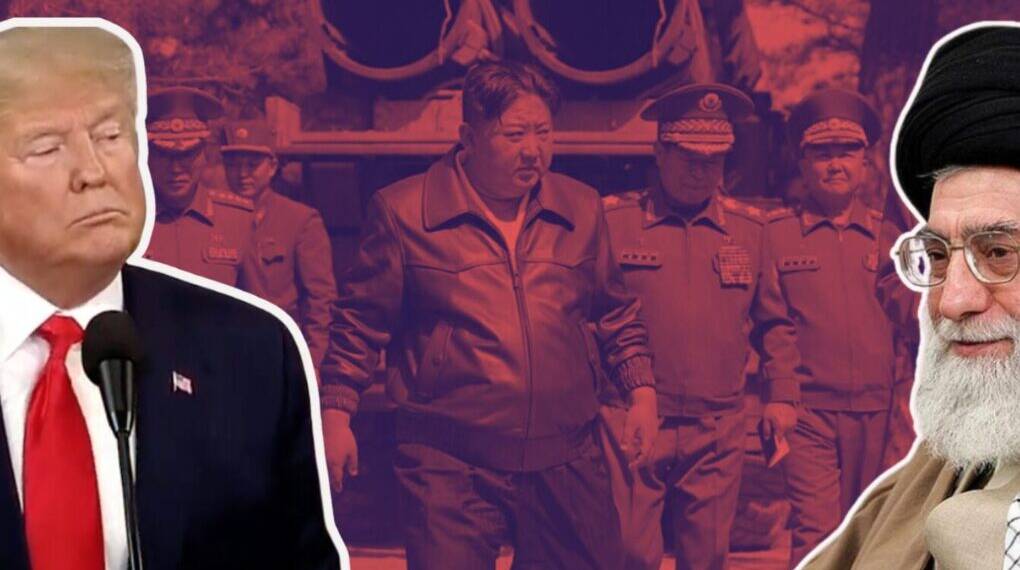For decades the parallels between Iran and North Korea have consistently drawn the interest of policymakers and analysts of the West. Both nations are subject to heavy international sanctions, harbor deep-seated distrust toward the West, and view nuclear weapons as essential to ensuring regime survival. With diplomatic avenues narrowing and regional tensions escalating, Iran appears increasingly likely to emulate North Korea’s playbook for nuclear development—emphasizing secrecy, reducing transparency, and sidelining international oversight.
North Korea possesses an established nuclear weapons capability, including the production of fissile material, warhead design, and a range of delivery systems. The regime has conducted multiple nuclear tests and continues to advance its capabilities, focusing on warhead miniaturization and the development of various missile platforms.
Although the precise number of warheads remains uncertain, expert estimates suggest North Korea possesses between 35 and 70 nuclear warheads.
Despite suffering considerable damage to its nuclear infrastructure from Israeli and U.S. attacks, Iran has managed to preserve its enriched uranium stockpiles, likely by moving them to undisclosed locations, thus maintaining its breakout capacity.
The Iranian parliament’s recent move to suspend all cooperation with the International Atomic Energy Agency (IAEA) and impose strict conditions on future inspections effectively ends meaningful international monitoring. This decision closely mirrors North Korea’s strategy of withdrawing from nuclear agreements and expelling inspectors, allowing for covert progress toward a nuclear arsenal.
Security Through Deterrence: The Logic of Regime Survival
Much like Pyongyang, Tehran views nuclear capability primarily as a shield against foreign intervention rather than a tool for aggression. North Korea’s successful nuclearization has deterred U.S. military action and, in its view, guaranteed regime survival despite international isolation.
Surrounded by hostile U.S. allies such as Israel, Saudi Arabia, and the UAE—and having experienced the U.S. withdrawal from the 2015 JCPOA—Iran sees this model as worth emulating.
Strategic Patience and Incremental Provocation
North Korea adopted a phased strategy: withdrawing from the NPT, escalating uranium enrichment, and conducting nuclear tests, interspersed with negotiations to buy time.
Iran appears to be following a similar approach: it remains within the NPT but has restricted IAEA access, increased uranium enrichment beyond JCPOA limits, and alternates between threats and diplomatic overtures to keep adversaries off-balance. This “gray zone” maneuvering allows for nuclear progress without provoking outright conflict.
Sanctions as a Badge of Defiance
North Korea has shown that even severe sanctions can be endured and reframed as nationalist resistance, especially when supported by black market activity and external allies like China.
Iran, having weathered decades of sanctions, may see nuclear brinkmanship as reinforcing its narrative of resistance, making a North Korean-style posture increasingly appealing to hardliners.
Collapse of Diplomatic Off-Ramps
Iran’s shift is not just ideological but also a product of eroded trust. The U.S. exit from the JCPOA and lack of new incentives have made diplomacy suspect in Tehran, empowering hardliners who argue that only self-reliance—including a nuclear deterrent—can ensure sovereignty.
This mirrors North Korea’s hardened stance after the collapse of the Agreed Framework in the early 2000s.
Lack of Military Consequences
North Korea has not faced major military retaliation for its nuclear advances, suggesting that a regime willing to absorb sanctions and isolation can cross red lines without triggering war.
Iran may draw similar conclusions; especially as global attention is divided and U.S. appetite for Middle East conflicts wanes.
Domestic Politics and Revolutionary Legitimacy
Both regimes derive legitimacy from resisting Western pressure. In North Korea, nuclear capability symbolizes strength and independence; in Iran, technological and military advancements are portrayed as proof of revolutionary success.
Achieving nuclear status, even symbolically, could help consolidate domestic power amid economic and social challenges.
The Regional Power Equation
A nuclear-armed Iran would dramatically alter the Middle East’s strategic balance, just as North Korea’s arsenal shifted East Asia’s security landscape.
Tehran may believe that nuclear capability would force adversaries to negotiate on its terms, bolster its influence in regional conflicts, and counter Israel’s undeclared nuclear arsenal.
A Dangerous Convergence
While Iran and North Korea differ in geography, economy, and regional roles, the erosion of multilateral diplomacy and the diminishing effectiveness of sanctions make the North Korean path to nuclear capability increasingly attractive to Tehran.
The risks are significant: regional proliferation, accidental conflict, and the weakening of the global non-proliferation regime. For Iran’s hardliners, however, the calculus may be stark—better to be a pariah with nuclear deterrence than a target without it








